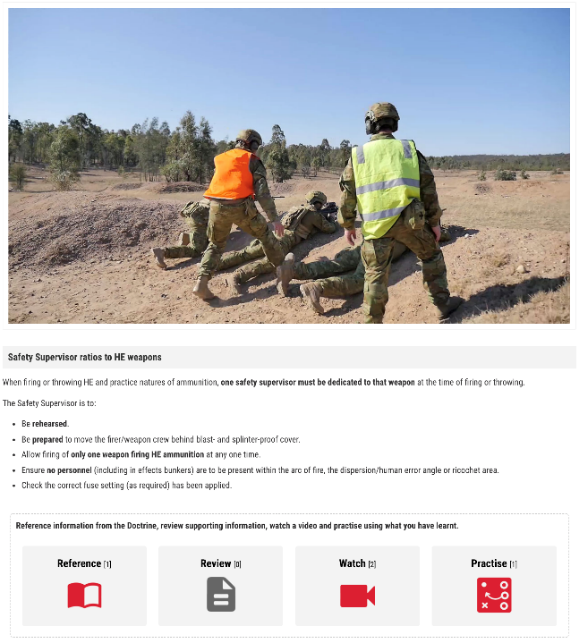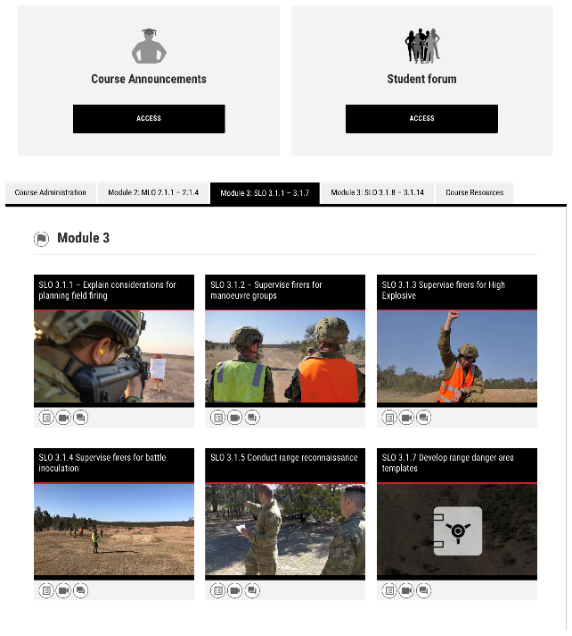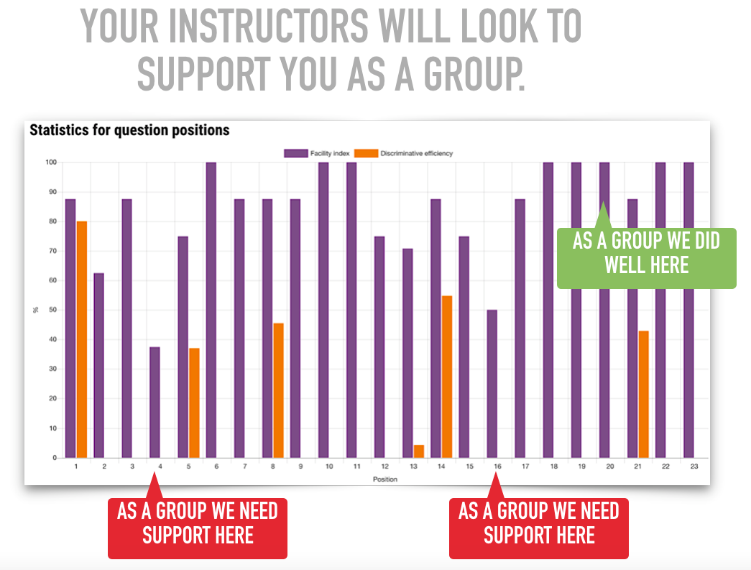During my travels as Director Professional Military Education and Head of Corps of the Royal Australian Army Educational Corps, the question 'What’s all this Spinifex stuff?' has been posed to me on several occasions. What some of them were referring to was the training and education transformation being trialled at the School of Infantry (SOI) this year. During my recent visit to the School, I saw for myself the trial in full-swing and how its instructors are leading the way for Army to transform how we train and educate. Let me explain…
The team at SOI were selected to be part of a learning and education trial led by DG TRADOC. The trial challenges the traditional way that instructors teach and students learn. It was to be a move away from the classic “Blueprint” and instructor-led lesson in front of a PowerPoint presentation, to an enhanced and targeted learning experience for our students. The two courses involved are the Senior Range Instructor (SRI) Course and the ADF Range Qualification (ADFRQ) Course – courses of significant importance for range safety. Enter Spinifex. Whilst to horticulturalists, Spinifex is known as a coastal plant in the grass family, to us they are our partner in training transformation. Together with select SOI instructors, they are providing the kind of insights necessary to improve how we train and educate.
You may have completed the Range Recertification Course last year; you would have all experienced videos produced by Spinifex on Land Range Safety Day. This is not what I’m talking about. Right now at SOI, the ADFRQ Course is being conducted as it never has been before. Progressively, modules of learning are being produced as online lessons that contain written information that is visually attractive and engaging. The modules also contain videos that depict our own soldiers in the field along with instructors explaining teaching points just as they would face-to-face. If the student chooses, they can also opt to look at the relevant doctrine through the click of a button or complete an exercise to help consolidate their learning. Typical pages look like this:


Students are provided with a laptop and 4G dongle which enables them to undertake their learning anywhere, anytime and at their own pace. Then, at the end of each module, learning is evaluated via a quiz. Sounds like CAMPUS you say? NOT!
Now be honest. How many of you have done the click, flick and forget CAMPUS course to avoid the reading and get it over with. Guilty I’m sure. The differences between a CAMPUS course and these courses are vast but the most significant difference is that blended learning is employed and you can’t just click, click, click without ramifications. There are faces at the end of your clicks and they are your instructors.
Here’s how it works.
Students read and interact with the learning materials. They might watch a custom-made video or click the doctrine icon that will take them directly to the point that they are learning about. If they choose, they could also review a scenario where they can practise applying their new-found knowledge. Some students will take 30 minutes, some will take 60 minutes or longer. It doesn’t matter.
When the students feel ready, they need to take a quiz. This is not your typical CAMPUS quiz. There are banks of questions related to each teaching point that appear randomly for each student. Not everyone’s 'Question 1' will be the same. In fact, there are so many questions that by the time you do all the screen shots, record your answers or shout: 'The answer’s B!' to your mate next door, you may as well have done all the learning that was expected of you in the first place.
That said, many students complete the scenarios and activities carefully and deliberately, which is exactly what their instructors want. Some, however, are still tempted to go straight to the assessment or rush through the practice scenarios only to find that they get the question wrong. Part of the cultural change required in this trial is to get the trainees to realise that the blend of online learning with classroom and practical activities is the package deal that results in a better, individualised learning experience. Learners are responsible for their learning and instructors still have a critical role to play in the learning process.
Once students have completed the quiz, the instructor analyses the results. Now this is 'the thing'. Remember in the Blueprint, the instructor does the test of objectives, asks a couple of questions and assumes everyone has learned something? The instructor doesn’t really know if all of their students have learned, do they? Those days are gone.
Instructors are now able to see which individuals are struggling and need extra help. Conversely, they’ll also be able to see who the 'jets' are and who can move on to the next module or be involved in helping to teach others back in the classroom or on the range. On top of that, instructors may see where they need to address a teaching point face-to-face or re-examine the material in their package. Through this method, not only is instructor marking time reduced, they now have the ability to quickly tailor post-quiz activities and practice towards the learning of both individuals and the group. This is not about saving time or replacing the instructor. It is about a custom-made, individual learning experience that allows more time for practice, be it in the classroom or out on the range. This approach delivers enhanced training that enables students to achieve deeper, more comprehensive learning outcomes and reduce knowledge fade and skill fade after the course has been completed.

The power of the analytics cannot be understated. As shown in the diagram above, instructors are able to use the data to target face-to-face instruction on the teaching points that the students generally struggled with. The demonstrated effect of this has been a significant closure in the gap results between the top performing students and those who may have otherwise struggled in the traditional system of instruction. As well, a 'confidence' factor has been worked into the analytics. Through this feature, instructors are able to ascertain who is guessing and who is confident in their learning. This means that even though someone is passing, the instructor can still see who needs some additional tutoring.
The added advantage is that the course products are then available online 24/7. This means that our SRIs and OICs of manoeuvre ranges can revise what is required whenever they are appointed to plan or conduct a range practice. Into the future, these products will also be linked to PEX for micro lessons that will allow our people to refresh their knowledge if they have been given a range appointment.
It has been both a professional and personal pleasure for me to observe our SOI instructors and Spinifex partners working together through thick and thin to transform the way we have traditionally delivered training. They’ve been doing a sterling job to provide a model that Army can aspire to on its training transformation journey.










I feel like we are just at the beginning of a major evolution when it comes to attitudes towards online and blended learning culture in Army (as you touch on with Campus and micro learning). Companies like Spinifex can certainly empower Army with their SME knowledge.
I would like to add that there are many local education officers that can advise schools and units on implementing their own training transformations.